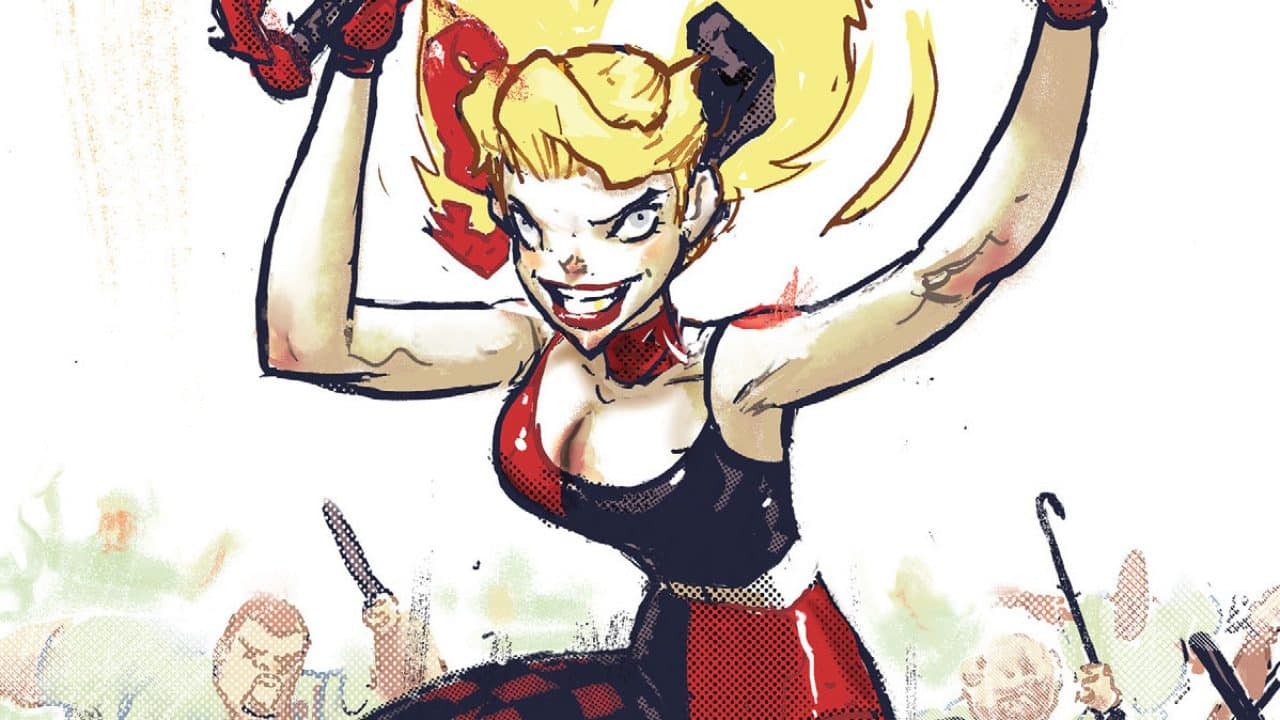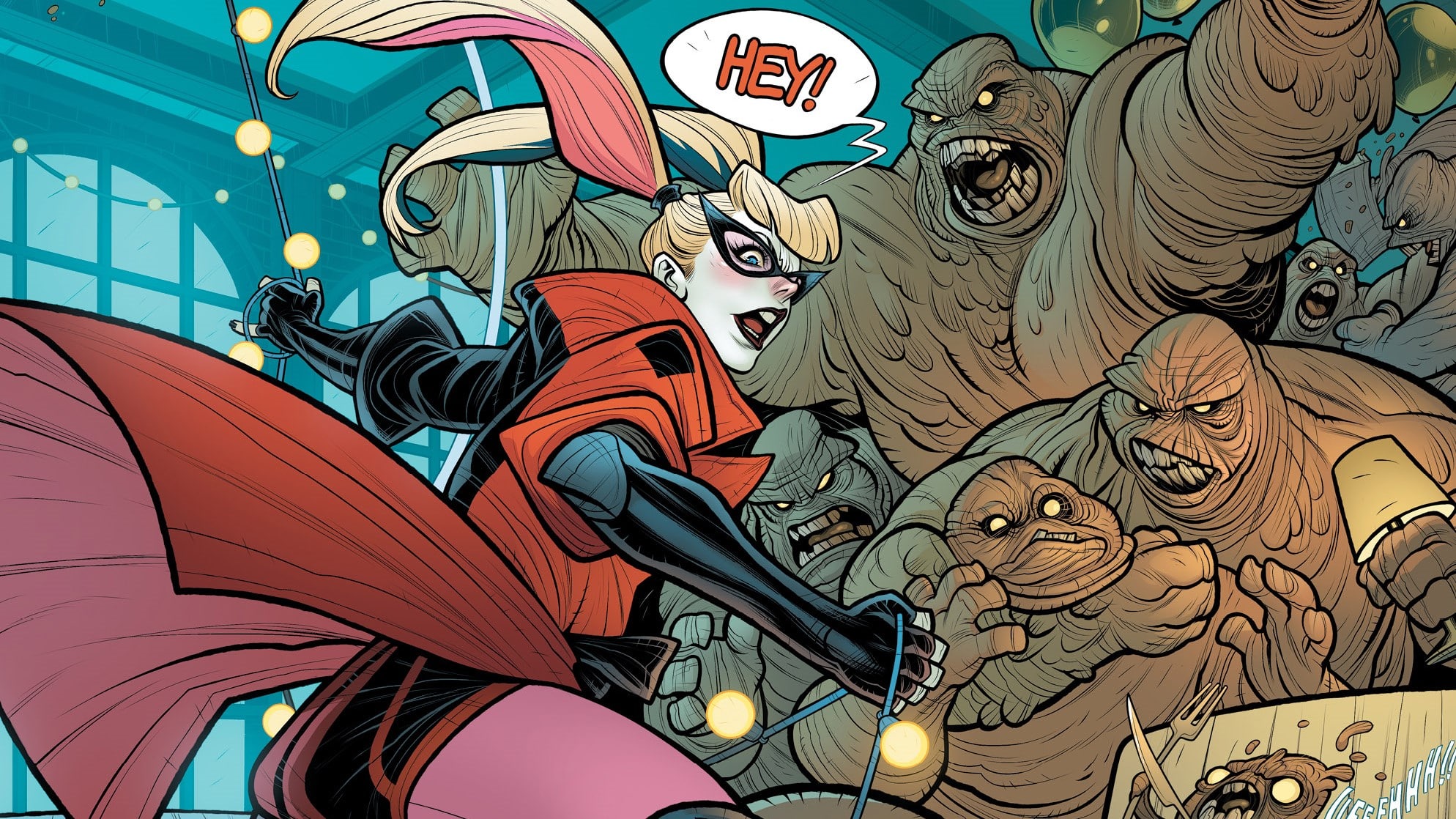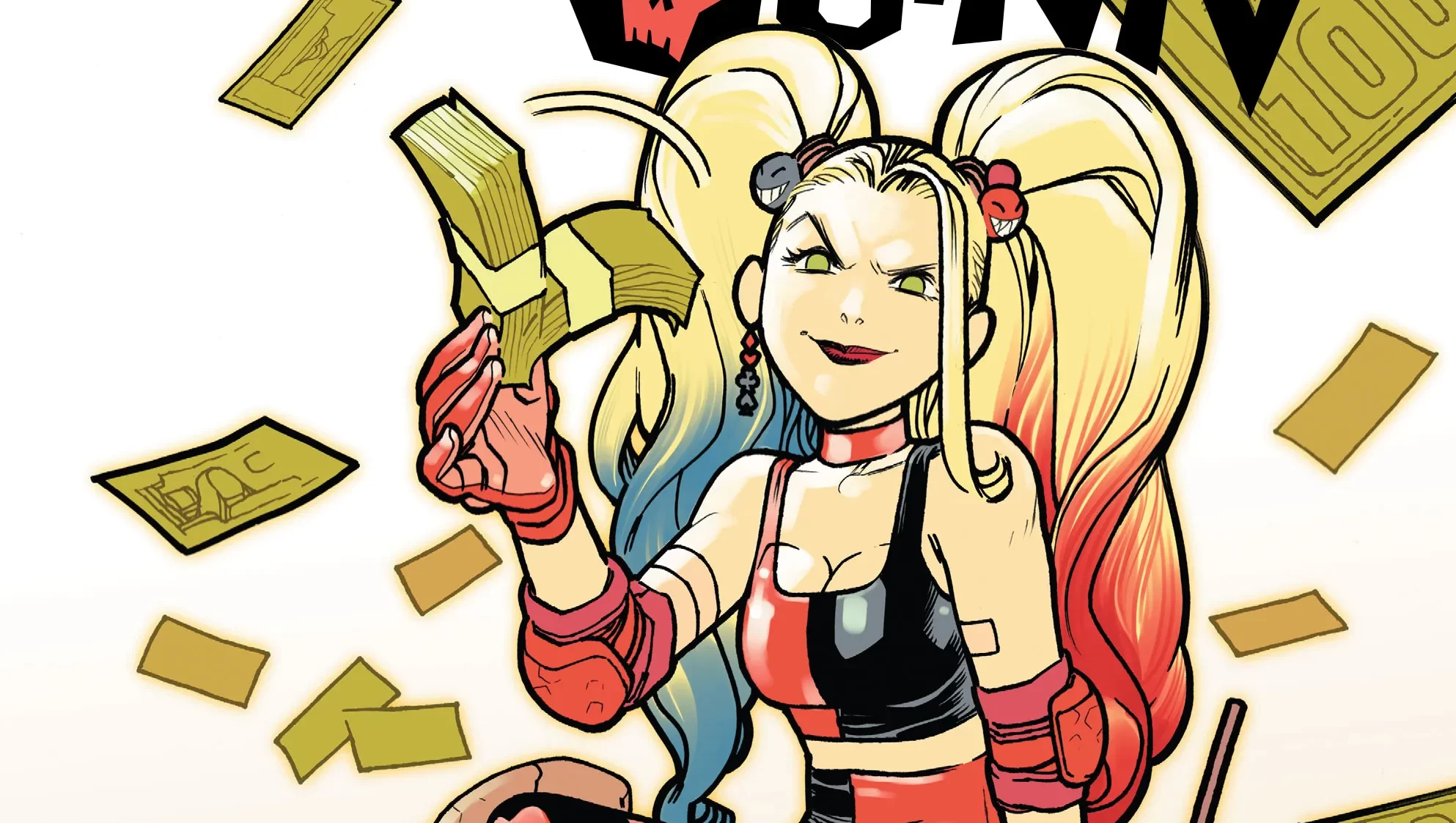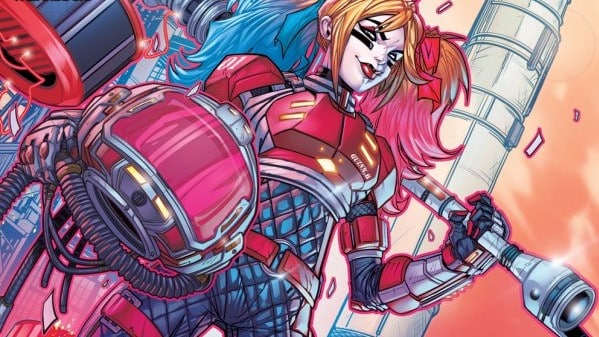In the aftermath of the Joker War, Harley Quinn is trying to find a way to rehabilitate those who joined in on the chaos as the Joker’s clowns, offering them a redemptive path. It turns out Hugo Strange has the same idea – the difference is that he’s got the city’s backing on his side, and a much less forgiving approach. Bad news for Harley, because Strange now has her in his sights. Written by Stephanie Philips, art by Riley Rossmo, colors by Ivan Plascencia and lettering by Deron Bennett.
Despite what the chaotic first page would have you believe, not a lot actually happens in Harley Quinn #2. There’s more setup than story here, but given how engaging it is, I’m not complaining. A run’s second issue is a good place to get to know its characters a bit more.
I’m still not entirely used to the way this version of Harley Quinn is being written. I get over it by imagining that the entire James Tynion IV run of Batman is a whole new Elseworlds line, and that Harley Quinn is a spinoff from that world and thus not subject to the characterizations I’m used to from her. Such are the mental twists necessary to be able to enjoy a shared comics universe, every now and again.
Simon Saint, a masks hating, security obsessed tyrant-in-the-making has put Hugo Strange in charge of rounding up the clowns in hiding in the aftermath of the Joker War. Hugo is quick to take advantage of his pardon and new responsibilities, holding a press conference to tell Gotham he is going to be holding hidden henchmen accountable for their actions, and help them make amends.
I’m not as familiar with Hugo Strange as I am with other Batvillains. I kind of love that he doesn’t have an easily recognizable theme. I love his weird design, those little round glasses and that unnecessarily prominent beard. I love that every time I see him, it’s like we’re starting from Square One in terms of what his villainous motivations are, and most of all, I love how outrageously certain he is that he is both the sanest and cleverest man in Gotham. Hugo Strange dons the role of Respectable Scientist the same way Batman dons the Bruce Wayne mask, and like Bruce Wayne, the people of Gotham have fallen for this guise hook, line and sinker.
I like how this enrages Harley, who despite her one time domino-mask and full-body costume, has never actually hidden who she is. Her road to redemption is an uphill climb, made harder by the Joker War, and in the meantime Hugo Strange gets the city practically handed to him by simply pretending to be the man people want to see. Harley looks at a Gotham that goes out of its way to forgive a man who is much more dangerous than she’s ever been, and your heart can’t help but go out to her for how unfair it all is.

While I like the story being told here, I wish it would just lean on its art team a little more. I know that Harley tends to babble, in and out of narrative captions, and that Hugo Strange loves nothing more than a dramatic speeches, but this issue is a lot more wordy than it needs to be – especially given how expressive the art is. The writing has a lot of tell not show – Harley has made references to her psychology degree far more than she’s been seen using that particular skill set.
The art is what’s really selling me on this comic, above anything else. I love how Rossmo’s character’s look like they’ve been sculpted by someone squeezing together large fistfuls of clay, making everyone look misshapen and extreme. I love how he plays with the page, giving panels their own sense of motion, and I love the cluttered, beat-down Gotham we get to see; a street-level view, so different from the gargoyle-infested rooftops the Batfamily tends to frequent. A broken down town that perfectly matches Harley’s mood. It’s Plascencia’s colors, though, that truly make this feel like a Gotham book. His bolder colors are a great match for Rossmo’s wackier art style, but it’s his use of darkness that adds the kind of drama that makes Batbooks such a thrill to read, which is especially evident in Kevin’s flashback scene.
This scene has been one of my favourite parts of the series so far. There are very few things that make Joker War seem worth it, but Kevin’s story is one of those things.
Why do I love Kevin?
I think it’s because of how heavily regret hangs off of him.
Most of the people who idolize the Joker are exhausting. They go on endless rants about how the Joker’s philosophy of chaos is the only one that makes sense, as if they’ve unearthed some profoundly clever insight and not just an excuse to be morally lazy. Kevin has none of that. His backstory shows us someone who, for just a moment, wanted to do something that made him feel strong – and then immediately regretted everything. The wrongness of what he’s done colors him (literally, in some panels). Given how hard this version of Harley is trying to redeem her past, you can see why she’s drawn to his own redemptive path.
This book makes you feel. I wish its wordiness would stop distracting from all of that. I’ve talked about my problems with this story’s direction, and its characterization of Harley, but ultimately, my heart’s going out to its characters, and I find myself drawn into the story – so it’s definitely doing something right. I can’t tell where this book is going, but I am kind of hoping it takes its time getting there, especially if it means the art gets more room to breathe. Harley Quinn’s vision of Gotham is one I don’t mind spending some more time in.
Armaan is obsessed with the way stories are told. From video games to theater, TTRPGs to comics, he has written for, and about, them all. He will not stop, actually; believe us, we've tried.






